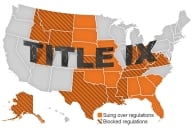You have /5 articles left.
Sign up for a free account or log in.
Over two weeks into a strike of clerical, technical and health care employees at the University of Minnesota, the union has decided it's time to return to work. For its members, however, a decision still looms: whether they should accept the university's offer.
After some 15 hours of mediation on Thursday, the union, Council 5 of the American Federation of State, County and Municipal Employees, decided to end the strike and allow its members to vote on the university's contract offer, which had already been on the table. Employees started returning to work as early as Saturday as the union prepared to meet with members at five campuses and mail out ballots. Workers will have the option to either accept the offer or reject it, which would possibly entail resuming the strike.
Registering its disappointment with the outcome, AFSCME's negotiating committee is not making a recommendation one way or the other on the offer. "[I]t’s not something that we want to recommend that people vote for, and we want them to use their own judgment," said spokeswoman Jennifer Lovaasen. "We believe the offer is insufficient because it doesn’t account for the rising cost of food, gas and housing."
One factor in the decision to end the strike, suggested university spokesman Daniel Wolter last week, was the looming cutoff for health benefits to employees not reporting for work. "We are pleased this strike has ended and appreciative of the union’s willingness to take this proposal to their membership for a vote," said President Robert Bruininks in a statement. "We look forward to their return and coming back together as a community."
The university's original two-year employment contract offered a 4.25-percent salary increase each year (for a total of 8.5 percent) for clerical and technical workers, and a 4.9-percent yearly increase (for a total of 9.8 percent) for health care workers. Since the university does not recognize a functional difference between "step" increases and cost-of-living adjustments, its numbers are aggregates; AFSCME, in separating step increases awarded for longevity from raises to match the cost of living, calculates that the pay increase is not sufficient to keep pace with inflation. The average yearly step offered by the university works out to between 2 and 2.4 percent, or just under half of the total increase.
Later negotiations after the strike began yielded an additional $300 yearly lump sum to complement the step increases of the eligible 94 percent of workers. The other 6 percent, who have no remaining steps on their pay scale, would receive $600 each year.
"This offer is unfair because it fails to keep up with inflation," said Rhonda Jennen, president of Health Care Local 3260, in an AFSCME press release. "The U is choosing to impoverish some of its workers. World-class universities don’t treat their workers like second class citizens."
AFSCME also asserts that "[d]ue to inflation, someone starting work under this contract will earn 8 percent less than someone who started the job in 2003."
Last week, employees on strike -- whose numbers slowly decreased from about a third of the 3,126 eligible workers on Sept. 5 to about 29 percent by Tuesday, by the university's count -- were joined by several dozen students who pledged a hunger strike in solidarity with the union. Some faculty members, against university policy, also held classes off campus.








